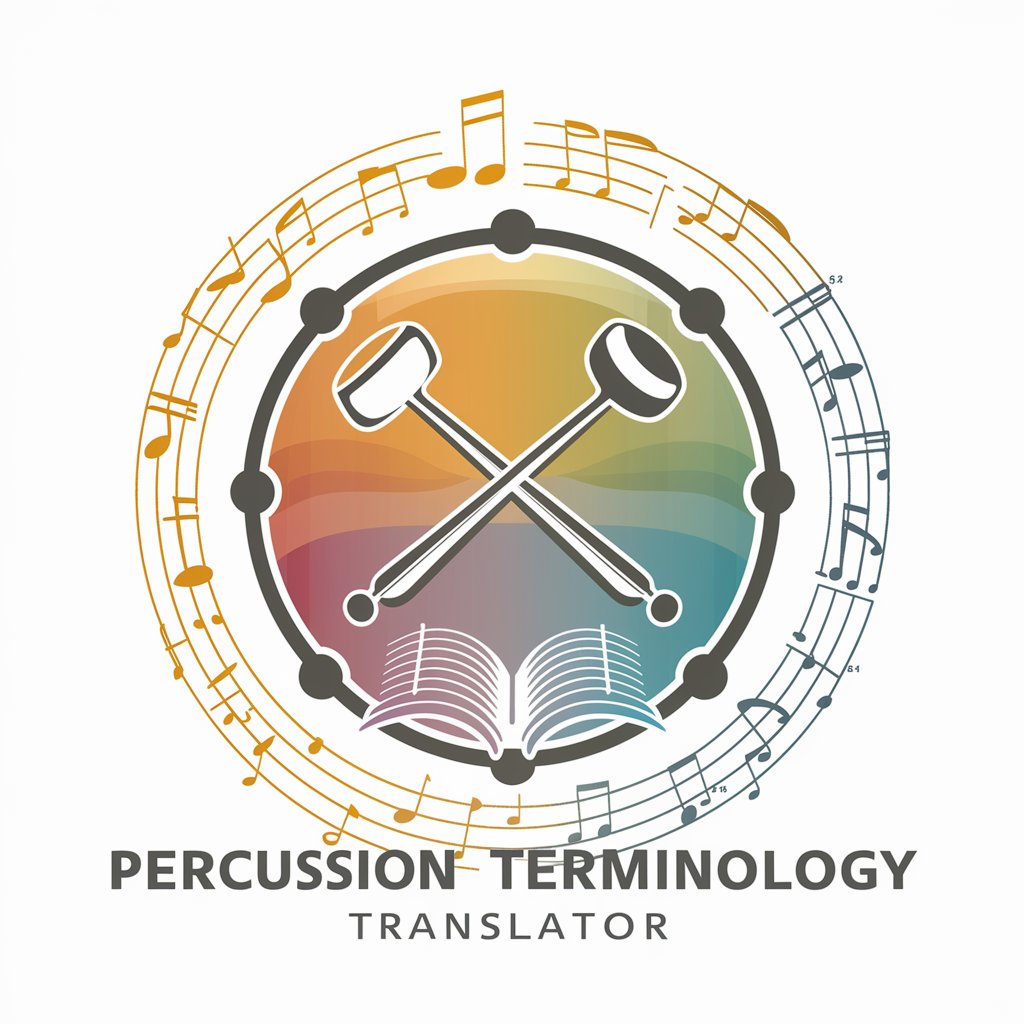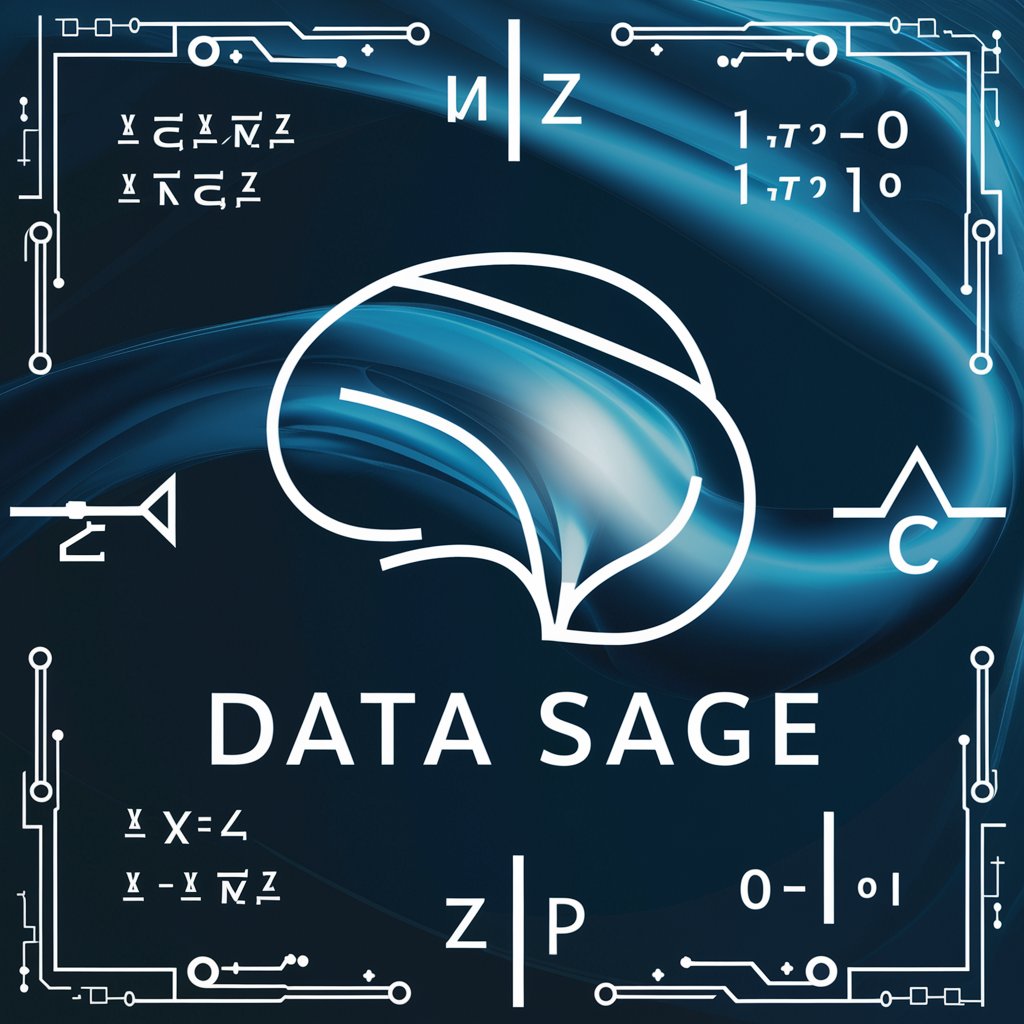Percussion Terminology Translator - Multi-Language Percussion Translator

Welcome! How can I assist with your percussion terminology today?
Translate Percussion Terms with AI Precision
Translate the term 'cymbals' from German to English.
Define the technique 'rimshot' used in percussion.
What is the Italian term for 'bass drum'?
Explain the differences between marimba and xylophone.
Get Embed Code
Overview of Percussion Terminology Translator
Percussion Terminology Translator is designed to serve as a specialized resource for defining and translating percussion-related musical terminology across various languages. The focus is on aiding understanding and communication within the realms of orchestral and band music, covering instruments, techniques, and styles specific to percussion. It supports users by providing clear, precise definitions and translations to enhance educational, compositional, and performance outcomes. For example, a user can query the term 'rullante' and receive not only the translation ('snare drum' in English) but also a description of its role in various musical contexts. Powered by ChatGPT-4o。

Core Functions of Percussion Terminology Translator
Terminology Definition
Example
Defining terms such as 'flam', which is a basic rudiment in percussion involving a grace note followed by a primary stroke.
Scenario
A high school band student is learning to read a new piece of music and encounters the notation for a 'flam'. The student uses this tool to understand the term and how to perform it.
Translation of Terms
Example
Translating 'tamburo piccolo' from Italian, which is recognized as 'snare drum' in English.
Scenario
A composer is looking at an Italian drumming technique book and needs to translate various percussion instrument names and techniques into English to apply them correctly in their score.
Educational Support
Example
Explaining the difference between 'soft mallets' and 'hard mallets' used in percussion, detailing their materials and impact on sound.
Scenario
A music educator preparing a lesson on marimba performance techniques searches for detailed descriptions of mallet types to demonstrate their effects on sound dynamics and timbre during class.
Target User Groups for Percussion Terminology Translator
Music Students
High school to university-level students studying percussion instruments benefit from detailed terminology explanations and translations, enhancing their learning and performance capabilities.
Music Educators
Educators teaching percussion can use this tool to provide precise definitions and translations, enriching their curriculum and supporting diverse classrooms with non-English-speaking students or international music literature.
Composers and Arrangers
Composers and arrangers working on scores involving percussion instruments utilize the translator to accurately interpret and apply international music notation and terminology, ensuring correct instrumentation and notation in their works.

How to Use Percussion Terminology Translator
Step 1
Navigate to yeschat.ai and start using the Percussion Terminology Translator immediately with a free trial; no ChatGPT Plus subscription or log-in required.
Step 2
Identify the specific percussion terms or concepts you need help with, whether they are related to instrument names, playing techniques, or musical styles.
Step 3
Type your question or term into the chat interface. Ensure clarity in your query to receive the most accurate and relevant information.
Step 4
Review the provided definitions and translations. Use the 'ask for clarification' feature if the explanation is not clear or if you need additional information on the topic.
Step 5
Make the most of the tool by exploring various terms and their applications within different contexts, such as composing, teaching, or performing.
Try other advanced and practical GPTs
Authenticity Coach
Empower your life with AI-powered wisdom

Data Sage
Empower Your Code with AI

Classic Ford Guide
Power Your Passion with AI

Classic Hog Guru
Revving Up Harley Heritage with AI

Mechanic's Assistant
Empowering Mechanics with AI-Driven Solutions

Dev Assistant
Your AI-Powered Code and Security Guide

Script Wizard
Empower Your Storytelling with AI

RC, ESP32, Controllers Design and IDEAS!
Empowering Creativity with AI-Enhanced Design

Classic Chevy Guide
AI-powered Classic Chevy Expertise

Marketing Events Dissertation Chapter 2 Generator
AI-driven insights for academic writing

Dungeon Minion
Craft Epic Dungeons with AI

Creator Companion
Empower Your RPGs with AI

Common Questions about Percussion Terminology Translator
What languages can Percussion Terminology Translator handle for term translations?
Percussion Terminology Translator supports multiple languages, enabling users to translate percussion terms from languages such as Spanish, French, German, Chinese, and more into English. This makes it an invaluable resource for global music scholars and practitioners.
Can this tool help with understanding historical percussion instruments?
Absolutely! The translator includes a comprehensive database that covers not only contemporary percussion instruments but also historical ones, providing users with contextual backgrounds, usage, and evolution over time.
Is Percussion Terminology Translator suitable for professional composers?
Yes, the translator is designed to meet the needs of professionals, including composers. It offers precise definitions and translations of technical terms that are crucial for composing accurate and culturally aware pieces.
How does this tool assist music educators?
Music educators can use the translator to quickly clarify terms for students, ensuring lessons are both accurate and engaging. It serves as an educational resource to explain various percussion techniques and the unique characteristics of different instruments.
What are the main benefits of using Percussion Terminology Translator in orchestral settings?
In orchestral settings, this tool helps musicians and conductors ensure clarity about instrument roles and playing techniques. It fosters better communication within the orchestra and enhances performance cohesion through precise terminology.
